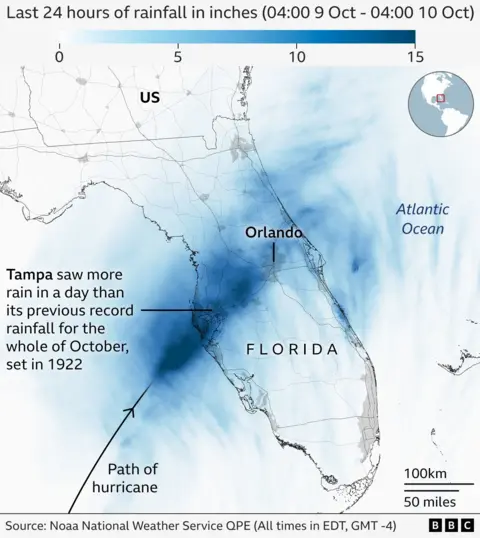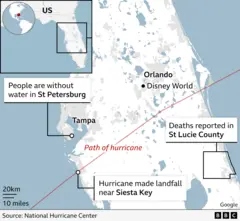Hurricane Milton is now moving away from Florida into the Atlantic Ocean, after tearing across the state’s peninsula.
But hurricane-force winds and rain are continuing in central parts of the state.
The storm’s arrival comes just two weeks after Hurricane Helene caused major damage across the south-eastern US.
When did Hurricane Milton hit Florida?
Milton made landfall in Siesta Key, Florida – a coastal community about 50 miles (80km) south of Tampa – at about 20:30 EST on Wednesday (03:30 BST on Thursday), according to the National Hurricane Center (NHC).
Nearly 3.3 million homes and businesses were without power by Thursday morning, dozens of homes have been destroyed, and at least four deaths have been reported.

Forecasters continue to warn of torrential rain, flash flooding, high winds and possible storm surges – which occur when water moves inland from the coast – of several feet in height.
At least 116 tornado warnings were issued across Florida on Wednesday, Governor Ron DeSantis told a news conference Wednesday evening, with 19 twisters confirmed so far in the state.
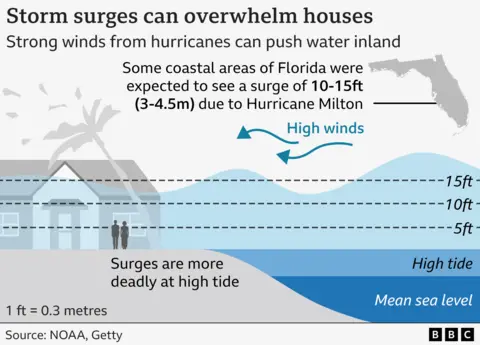
Where is Hurricane Milton?
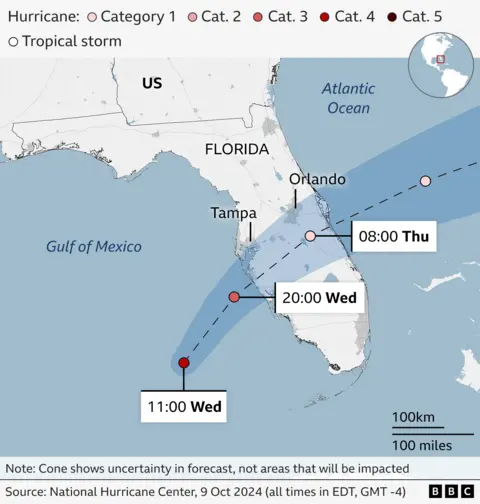
With wind gusts most recently recorded reaching up to 85mph (140km/h), Milton is now heading into the Atlantic Ocean.
Its sheer size means its effects are being felt much wider than the shaded cone shown above.
In addition to most of Florida, the impact of the storm has also been felt in Georgia and South Carolina.
During its days-long journey, Milton tracked eastwards from the Gulf of Mexico, where it was classified as a category one hurricane on Sunday. It also brushed Mexico’s Yucatan peninsula.
Before striking Florida, it was said by forecaster to have “wobbled” to the south, leading forecasters to alter its track slightly.
The storm has affected some of the areas recently decimated by Hurricane Helene. Tampa, which has a population of more than three million people in its wider metropolitan area, is just north of Siesta Key, where the storm made landfall.
After crossing into the Atlantic early Thursday, Milton is expected to move further east, north of the Bahamas.
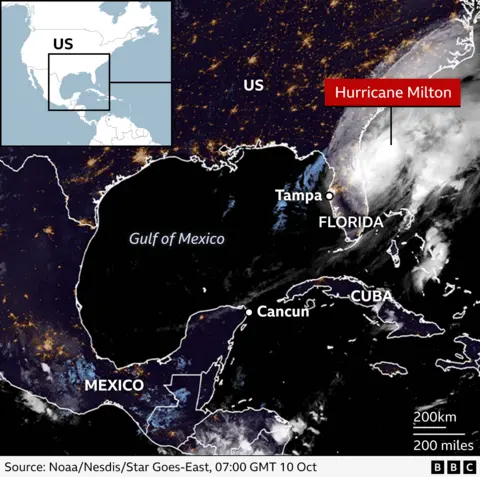
Where are the Hurricane Milton evacuation zones?
Traffic jams formed and airports announced closures as Floridians were told to prepare for the state’s largest evacuation effort in years. Officials said Milton could be the worst storm to hit the area in about a century.
As the hurricane approached, most counties were in an official state of emergency, and evacuations were ordered up and down Florida’s west coast.
Disaster management authorities issued a list and map of the evacuation orders spanning dozens of counties. Several large shelters were also prepared as a last resort for those stranded.
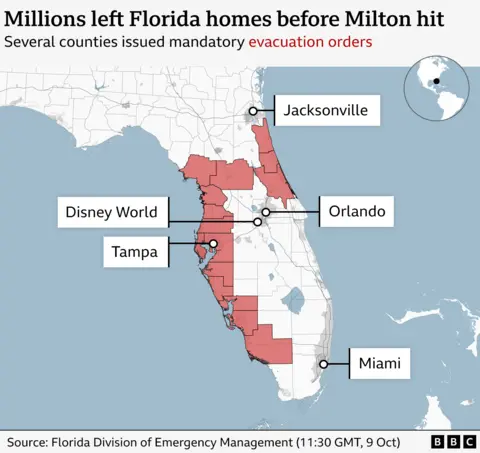
What is a hurricane and how do they form?
Hurricanes – sometimes known as cyclones or typhoons – are a type of tropical storm that form in the North Atlantic. They bring strong winds and heavy rain.
When ocean air is warm and moist, it rises, and then starts to cool – which causes clouds to form.
Sometimes this rising air can move away at the top of the hurricane more quickly than it can be replaced at the surface, causing the surface pressure to fall.
The falling pressure causes the winds to accelerate with more air then getting pulled in as the hurricane strengthens.
The National Oceanic Atmospheric Association (Noaa) predicted that the 2024 hurricane season would be more active than usual. Rising average sea temperatures due to human-caused climate change were partly to blame, it said.
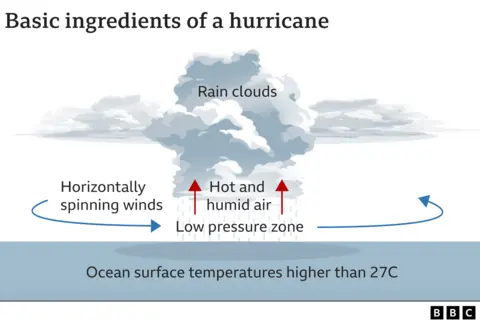
How are hurricanes categorised?
Hurricanes are separated into five categories based on their wind speed.
Milton was classified more than once as a category five storm – the highest – but weakened as it approached the US coast, striking as a category three storm.
After making landfall, it was further downgraded to category one.
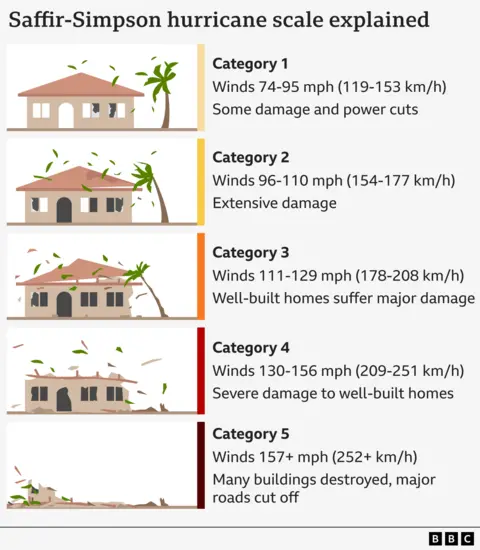
How is climate change involved?
Hurricane Milton intensified quickly as it passed over exceptionally warm waters in the Gulf of Mexico, where sea surface temperatures are around 1-2C above average.
Warmer waters mean that hurricanes can pick up more energy, potentially leading to higher wind speeds.
A warmer atmosphere can also hold more moisture – up to about 7% for every 1C of temperature rise. This means that rainfall from hurricanes can be more intense.
And global sea-levels have been rising in recent decades, largely thanks to global warming.
This makes it more likely that a given storm surge will lead to coastal flooding.
In Florida, average sea-levels have risen by more than 7in (18cm) since 1970, according to US government data.
A full scientific analysis will be needed to quantify the exact role of climate change in Hurricane Milton.
But its rapid intensification fits with expectations of how these storms are changing in a warming world.
